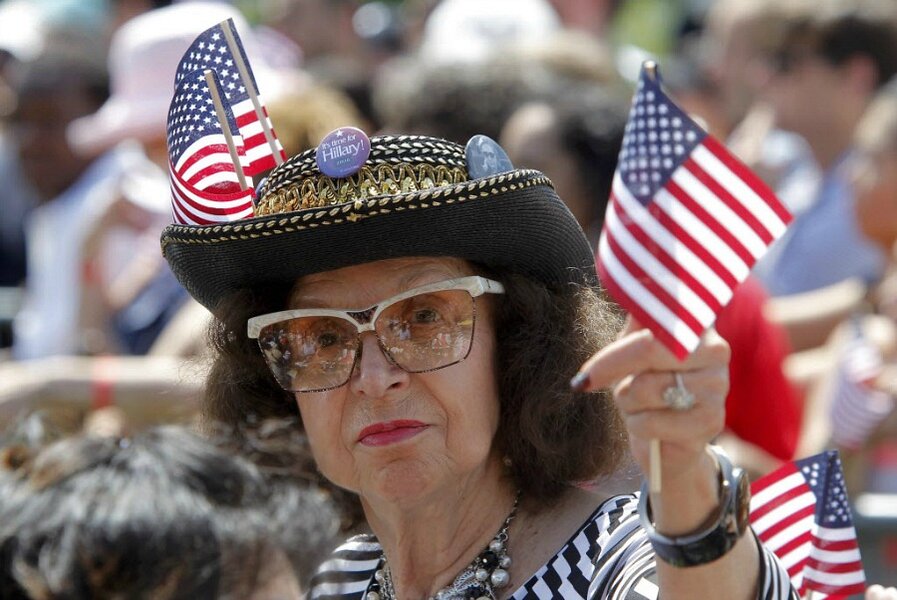Flag Day: What it means
Loading...
| WASHINGTON
What’s Flag Day? It’s the American celebration of the birthday of the Stars and Stripes. On June 14, 1777, the Continental Congress passed a resolution “that the flag of the thirteen United States shall be thirteen stripes of alternate red and white, with a union of thirteen stars of white on a blue field, representing the new constellation”.
So happy birthday, Old Glory. Long may you wave, o’er the land of the free and the home of the brave.
After all, we’re a nation that puts unique emphasis on the symbols of its revolutionary past. The flag unites us. Sarah Palin celebrates Flag Day. Hillary Clinton celebrates Flag Day. Little kids waving tiny flags from California to Connecticut celebrate Flag Day.
“Nowhere on Earth do citizens fly their national flags, as Americans do, everywhere they live and everywhere they go, from our front porches to our pickup trucks,” writes journalist and historian Marc Leepson in his book “Flag: An American Biography.”
Like many American holidays, Flag Day didn’t really get rolling until the mid to late 1800s. Like many American holidays, Flag Day has competing people, cities and states that claim to be the first to establish its celebration.
The National Flag Day Foundation cites Bernard J. Cigrand, a young schoolteacher from Waubeka, Wisconsin who in 1885 assigned his students to write an essay about what the flag meant to them. Later in life he spent years trying to get Congress to declare Flag Day a national holiday.
Then there’s William T. Kerr, a Pittsburgh, Pennsylvania schoolboy who in 1885 founded the American Flag Day Association, according to the Veterans Administration. Some also dub him the Father of Flag Day.
On the Washington level, Presidents Wilson and Coolidge both issued proclamations that June 14 be observed as Flag Day. But it wasn’t until 1949 that Congress passed legislation to that effect and President Truman signed it into law.
So Flag Day has an official date. But it is not a full-blown federal holiday. Federal workers don’t get the day off (except when it falls on a Saturday or Sunday). Schools don’t close, mail is still delivered, and offices don’t shut down. Why is that?
As we’ve written before, the short answer is that it wasn’t part of the 1968 Uniform Holiday Act. That’s the law that sets the framework for the 11 official federal holidays and multiple three-day weekends that have launched a million picnics and mattress retailer sales.
So in that sense Flag Day didn’t quite make the holiday Major Leagues. Thanksgiving, it’s not.
We’d guess Flag Day faces the problem that to lawmakers it seemed a bit superfluous. It’s smack in the middle of bunting-heavy holidays Memorial Day and July 4th. That’s a lot of red, white and blue. Throw in Veterans Day and the patriotism day-off category starts to look full.
But does that really matter? The flag celebrates the nation’s components, its states, not the central capitol of Washington D.C. It’s about a piece of cloth that people use as decoration, insulation, and inspiration. It’s not complicated. Celebrating it isn’t complicated. There aren’t rituals. There aren’t Flag Day foods. You don’t have to have guests over. It doesn’t have … requirements.
Except one. Take out a flag. Hold it high. And wave.








